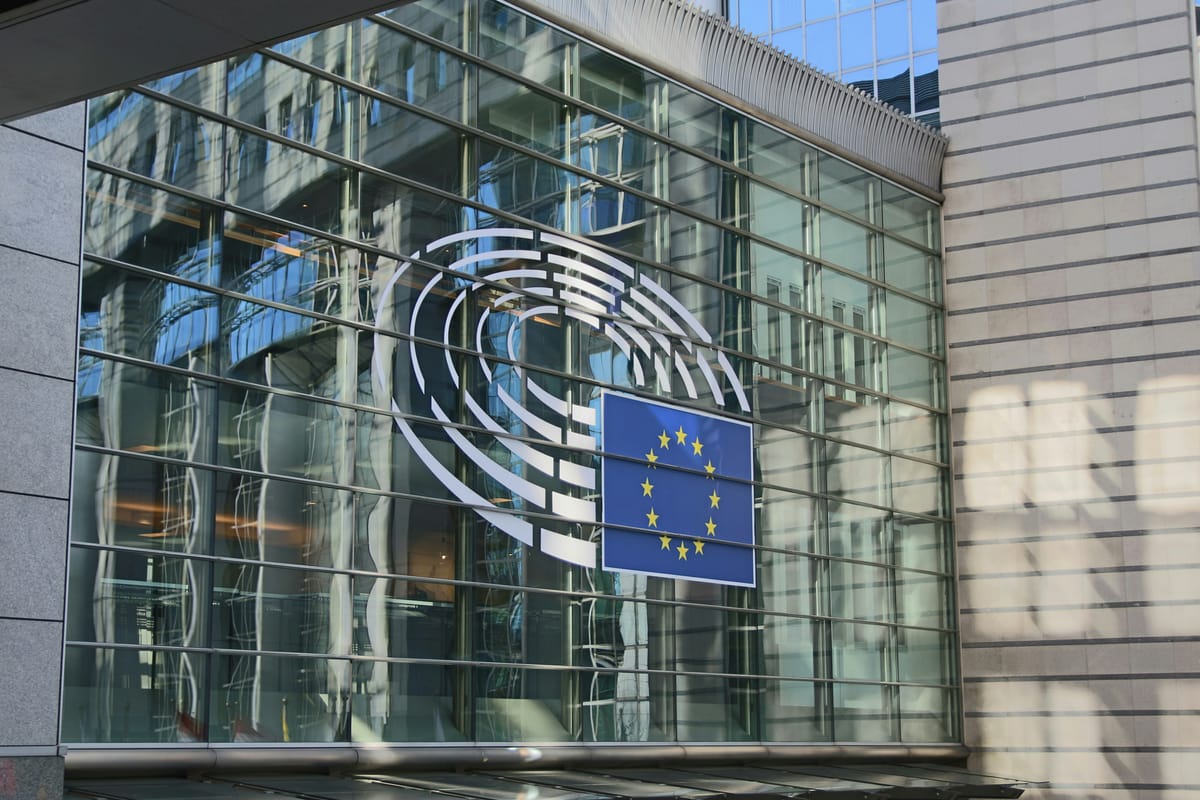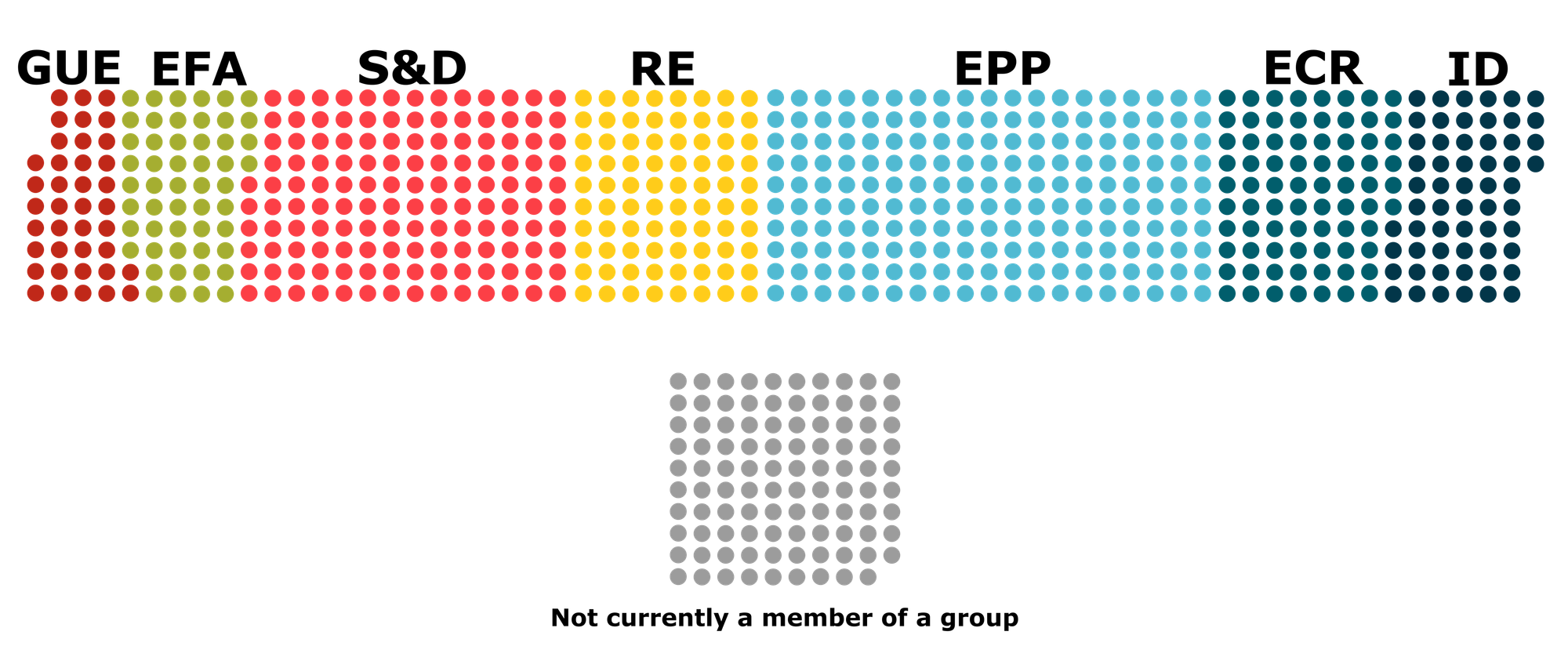European Parliament Election

The world's only democratically elected transnational parliament has held its election and the result showcases a clear shift toward the right. Europeans headed to the ballot box between the 6-9th of June in 27 member nations, ranging from Sicily in Southern Italy to Lapland in Northern Finland. Each member state received a set amount of Member of the European Parliament (MEP) seats starting at a minimum of 6 and ending at a maximum of 96. As usual, Germany held the largest share of seats, followed by France and Italy.
The centre-right European People's Party (EPP) has been the largest political group in the parliament since the start of the millennia and was widely expected to retain the position. During the election cycle the EPP lost seats as Viktor Orbán's Fidesz in Hungry left the group. However, the second largest group the Progressive Alliance of Socialists and Democrats (S&D) itself experienced some turbulence as the SMER party from Slovakia quit. Moreover, the S&D won significantly fewer seats then the EPP in 2019 giving the centre-right party strong margins to fall back on. Renew Europe (RE) alongside the Greens were expected to make the heaviest loses ahead of Election Day, both struggling in domestic politics as well. On the other hand, the European Conservatives and Reformists (ECR) and the Identity and Democracy groupings were seemingly set for a surge. However, the suspension of the AfD from Germany. They have hampered the ID significantly leaving the race for second place firmly between the RE and ECR parties.
The result overall reflects a European shift toward the right, the EPP made the biggest gains at +14 followed by ID at +9 and the ECR at +7. The Left (GUE) inched small gains at +2 whilst the other left-leaning groups lost seats the Greens lost 19 seats and the S&D lost a mere 3 seats. The largest loser of election night was the liberal Renew Europe group, losing 22 seats thereby dipping below the 100-seat benchmark created last election. However, the practical differences the result entails are minor; the centrist groups together garner a clear majority. Furthermore, the EPP looking right toward the ECR and ID is unlikely as that would compromise the cooperation with the larger S&D and RE both do not want to work with the right-wing groups. The fragmented state of some groups, however, may mean that the paper majority does not add up, in that case, the Greens are a potential partner. Simply a majority coalition requires both the EPP and S&D in the same group unless anything major changes.

Outside Brussels and Strasbourg, the domestic results can be telling regarding government and opposition popularity. In France Mr Macron's liberal Renaissance suffered a major defeat against the Rassemblement National (RN) party, winning roughly half the votes. The catastrophic result subsequently led to President Macron dissolving the National Assembly (the French parliament) and calling a snap election, something the RN had been demanding. Since then the left has united, Les Républicains have been embroiled in political chaos due to their leader holding secret negotiations with RN (the leader has since been suspended and barricaded himself in party HQ) and Macron has held speeches. The result of the snap election to be held later this month and concluded in early July will bear paramount importance, as it may result in an RN Prime Minister, a first.
Outside Paris the liberal Prime Minister of Belgium suffered greatly, resigning due to his party's losses. Coalition talks between the Belgian parties in parliament are set to begin, instigating what is expected to be lengthy talks. To differ from the rest of Europe the Nordics experienced increased support for left-wing parties, with the Greens gaining ground in Sweden, becoming the 3rd largest party beating back the Sweden Democrats who for the first time, since entering parliament, lost votes in a national election. Vasemmistoliitto/Vänsterförbundet made major gains in Finland with GUE winning more seats than S&D. In Denmark Socialistisk Folkeparti, the Socialists, became the biggest party, mustering higher support than Socialdemokratiet that in recent years has moved to the right.
Centre-right Isamaa in Estonia turned polling into tangible seats, becoming the largest party, defeating the ruling liberal Estonian Reform Party, which came 3rd. The Social Democrats took 2nd place. Isamaa's Spanish counter party Partido Popular (People's Party) firmly became the largest, pushing 1 of Europe's last Social Democratic bastions back, into 2nd place. The PP gained 9 seats, mainly taken from the centrist Citizens Coalition that completely collapsed, winning no seats. Far-right Vox made gains. The Social Democrats secured 1 seat less than in 2019.
Giorgia Meloni in Italy enjoyed huge gains, winning 24 seats an increase of 14. Her popularity has spilled over into the EU-election and her party may come to hold a central role in the Brussels-based parliament. However, moreover, the Social Democrats made substantial gains, winning an extra 5 seats, showcasing that left-wing politics still has a place in right-dominated Italy.
The result showcases a changed Europe, the right-wing is clearly in favour. However, the centrist parties still remain strong and the EPP, S&D alongside RE retain a clear majority in the parliament with options for a larger coalition if needed. Moreover, the right-wing did not succeed in all countries; namely, the Nordics experienced a fall in support for ECR member parties. Europe is a different place from 5 years ago, that much is clear, however, so too will Europe be different in yet another 5 years. And Election Day is the only opinion poll that counts if the eurosceptic parties can continue gaining remains to be seen.



